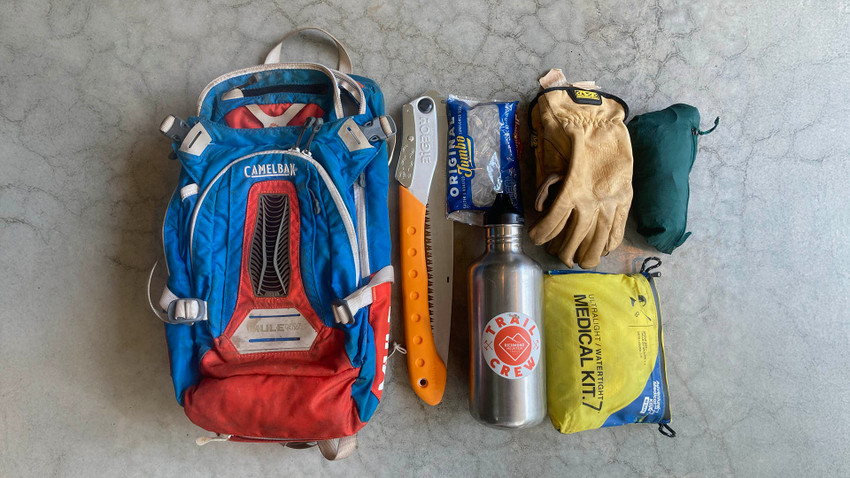Richmond Mountain Trails Uses Silky Saws to Build Vermont’s First Fully Adaptive Trail Network in Bolton, Vermont
“All trail networks are not created equal,” says Berne Broudy, president of Richmond Mountain Trails, a chapter of the Vermont Mountain Bike Association. “But both new and old trail networks can be equally welcoming to adaptive riders and able-bodied riders without compromising the fun for anyone.”
Broudy should know. Richmond Mountain Trails just built the Driving Range, the first fully adaptive-friendly, singletrack riding network in Vermont, in the East, and one of the only grassroots-built adaptive singletrack networks in the United States. In addition to engaging professional trail builders for this project, RMT leaned on volunteers who shoveled, raked, sweated, and sawed to clear corridors and build trails. To date, volunteers have put more than 5000 hours into bringing the Driving Range network to life.
For many mountain bikers, there is nothing more thrilling than getting out and exploring new terrain, the jangle of nerves on an unfamiliar feature, the rush of a rapid-fire downhill, and the fist bump with friends at the top of an epic climb. When you live in a place like Vermont, where mountain biking trails abound and the sport is front and center in the outdoor recreation scene, it’s easy to take trail access for granted.
Unless you’re a mountain biker riding an adaptive bike. Historically, adaptive mountain bikers can’t just pick any trail and feel confident riding it. When your bike can be capsized by a steep berm, when features rideable by a two-wheel mountain bike are impassible by an aMTB, and you need a chaperone or two to get across too-narrow bridges, through tight corners, and across off-camber slopes, exploring new terrain can be scary and dangerous. When RMT had the opportunity to design and build The Driving Range network, they knew there was a new way to serve the recreation community - by building Vermont’s first fully-adaptive mountain bike network.
In August 2023, the Driving Range opened with five miles of trail suited for adaptive bikes that also provide progression so that all riders can develop their skills. The club plans to open three more descent trails in 2024.
“When we first came out here it was a jungle,” says RMT board member Max Krieger. “We had professional trail builders tell us that the zone was too steep and too dense to build trails. Thanks to more than 200 volunteers armed with Silky saws, benching tools, shovels, rakes, rock bars and more, we managed to clear corridors, reveal cool rock features, and turn the Driving Range into a haven for progressing skills whether you’re on a three-wheeled adaptive bike or a two-wheeled pedal bike.”
RMT has a stash of six Bigboys, and many volunteers and RMT board members have their own Silkys too.
“I’ve been blown away by the efficiency of clearing big blowdowns with the Bigboy 2000,” says RMT board member Merrick Gillies, who also owns a Gomboy. “My Silkys let me leave the chainsaw at home and bring a whole variety of other tools in my pack instead. That makes me more efficient because I can get a lot of different kinds of work done when I head into the backcountry.”
“Once we flagged our climb, we had an army of volunteers clear a corridor of mixed-age saplings in record time so that we could build a climbing trail to the height of land,” says RMT Board member Max Krieger. “Power tools would have been slower and louder. Silkys were efficient and easy to use, and we could give a saw to any volunteer, no chain saw certification needed.”
“Every time I go out to build the Silky always goes into my backpack with me,” says Rob Galloway, RMT Trail Boss. “Most times when there is a tree down or in the way, a Silky is all I need to clear it. And when I bring a chainsaw, I also bring a Silky with me so I can cut the chainsaw out if it gets stuck. Now that we’re working on maintenance at the Driving Range as we continue to build, I send a Bigboy out with each work crew. It always comes in handy. They cut so fast, people don’t get frustrated as they would using other hand saws. More often than not, by the time they finish the sawing project, they want one of their own.”
Learn more about the Driving Range or donate at RichmondMountainTrails.org.

